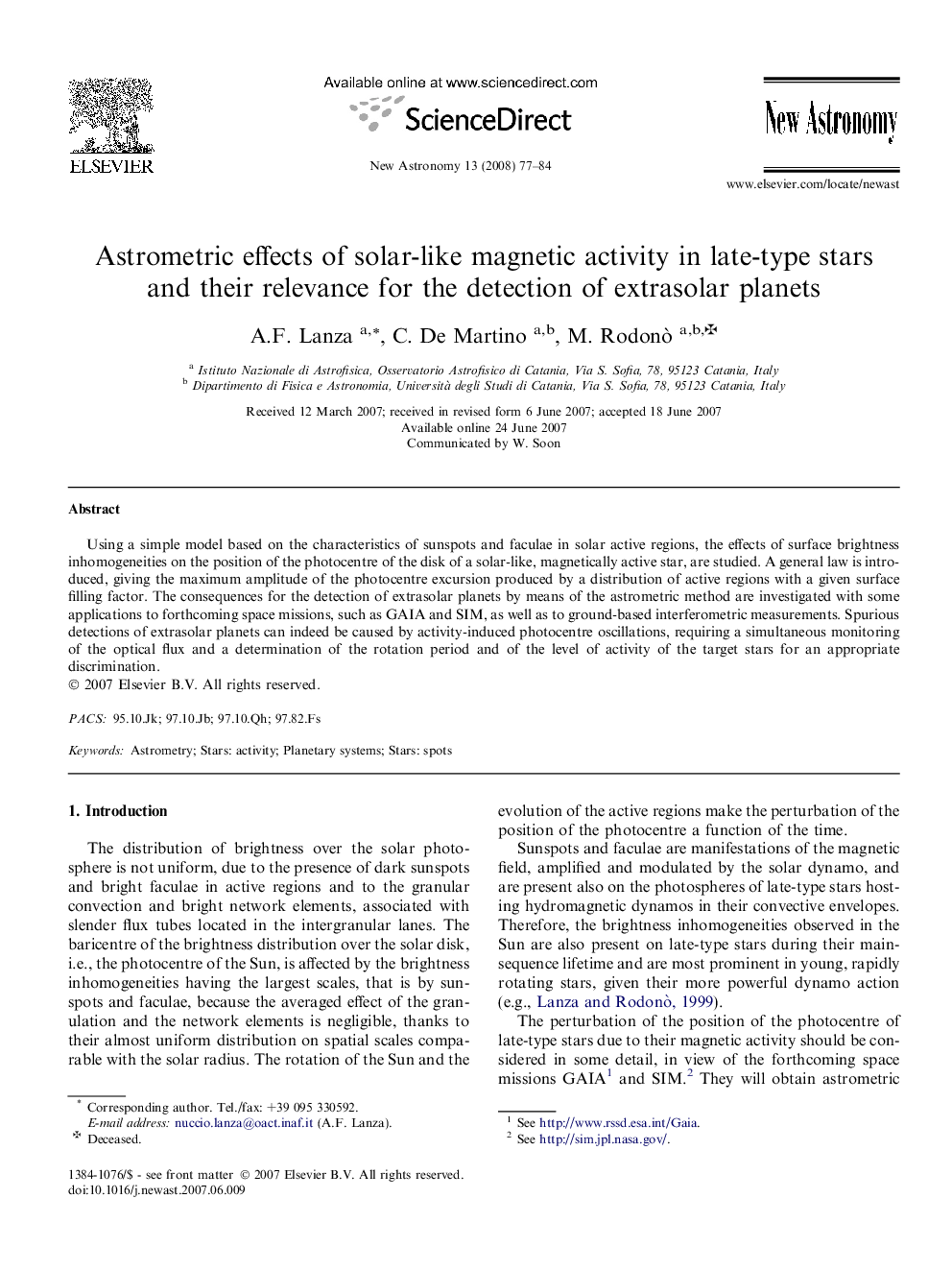| Article ID | Journal | Published Year | Pages | File Type |
|---|---|---|---|---|
| 1779857 | New Astronomy | 2008 | 8 Pages |
Using a simple model based on the characteristics of sunspots and faculae in solar active regions, the effects of surface brightness inhomogeneities on the position of the photocentre of the disk of a solar-like, magnetically active star, are studied. A general law is introduced, giving the maximum amplitude of the photocentre excursion produced by a distribution of active regions with a given surface filling factor. The consequences for the detection of extrasolar planets by means of the astrometric method are investigated with some applications to forthcoming space missions, such as GAIA and SIM, as well as to ground-based interferometric measurements. Spurious detections of extrasolar planets can indeed be caused by activity-induced photocentre oscillations, requiring a simultaneous monitoring of the optical flux and a determination of the rotation period and of the level of activity of the target stars for an appropriate discrimination.
